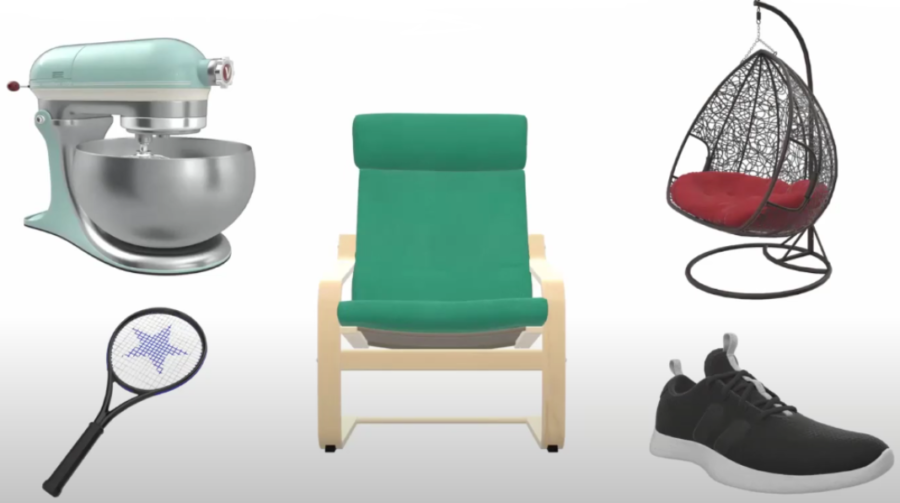
In Augmented Reality and Virtual Reality News
June 9, 2021 – The Khronos Group, an open consortium of industry-leading companies creating graphics and compute interoperability standards for 3D graphics and augmented & virtual reality (AR/VR), has today announced the release of its 3D Commerce Viewer Certification Program.
3D viewers are software engines that enable users to display and interact with 3D models. Viewers are used by retailers, social media sites, and brands to create experiences on e-commerce storefronts, search engines, ad platforms, and in native applications. According to the Khronos Group, the Viewer Certification Program enables 3D viewers across the industry to demonstrate that they can accurately and consistently display 3D products, clearing the way for reliable 3D and augmented reality- (AR) powered shopping across multiple platforms and devices.
The group added that companies including Amazon, Babylon.js, CGTrader, Emersya, Epic Games (Unreal Engine), Facebook (Spark AR), Google (<model-viewer> & Scene Viewer), Samsung (Internet Browser on Android), SketchFab, Unity, and UX3D (Gestaltor) have begun the process of certifying their viewers under the new program.
Previously, when artists and brands created digital products, there has been no guarantee that these products would appear consistently on different platforms. Since 3D assets are created independently from 3D viewers, which viewer is used can have a major impact on what a consumer sees. The Khronos Group’s 3D Commerce Working Group’s solution for this issue is to promote not one particular viewer, but to enable consistent performance across all of them.

“When artists spend time perfecting a model for use in one viewer, it is both frustrating and inefficient to have to go back and edit it to display properly in every different viewer. In order for us to create an ecosystem of shared assets, artists need a common target,” said Ashleigh Miller, 3D Program Manager for Amazon and co-chair for Khronos Group’s Viewer Certification Task Sub Group. “Developers need to be free to choose the right viewer for their application, but artists should also have an expectation that their work is going to look as it’s supposed to.”
The Khronos 3D Commerce Viewer Certification Program is open to any company that wishes to certify that their viewers are capable of accurately displaying 3D assets used in e-commerce. In order to become certified, vendors must demonstrate that a 3D asset will look the same in their viewer versus another certified viewer. Potential Certificants use a publicly available test package containing glTF assets to generate test images. The Khronos 3D Commerce Working Group reviews these images, using the Khronos 3DC Sample Viewer as a baseline. Companies sign a Certification Agreement and pay an annual Certification Program Fee (USD $1,500 for Khronos members, USD $2,500 for non-members) to make an unlimited number of submissions.
Successfully reviewed submissions and viewers will be added to a public Certification Registry. Certificants can then use the 3D Commerce Certified trademark (shown below) in association with their certified viewers.

“The more vendors that opt into viewer certification by Khronos, the more possibilities will open up for 3D assets,” said Leonard Daly, Viewer Certification Task Sub Group co-chair. “Brands and application developers will be able to adopt certified viewers with confidence, knowing that they’ll be able to bring in assets from a variety of different sources and have them perform as expected. We’ll be able to break out of this norm of having to custom-build everything, which will lower barriers to entry for all kinds of high-volume 3D use cases.”
More information and submission resources can be found on the Khronos Viewer Certification website. To find out more about how the Khronos Group is working to grow the 3D asset ecosystem, visit the 3D Commerce page on the Khronos Group website.
Image credit: The Khronos Group / YouTube / Wayfair
About the author
Sam is the Founder and Managing Editor of Auganix. With a background in research and report writing, he has been covering XR industry news for the past seven years.
